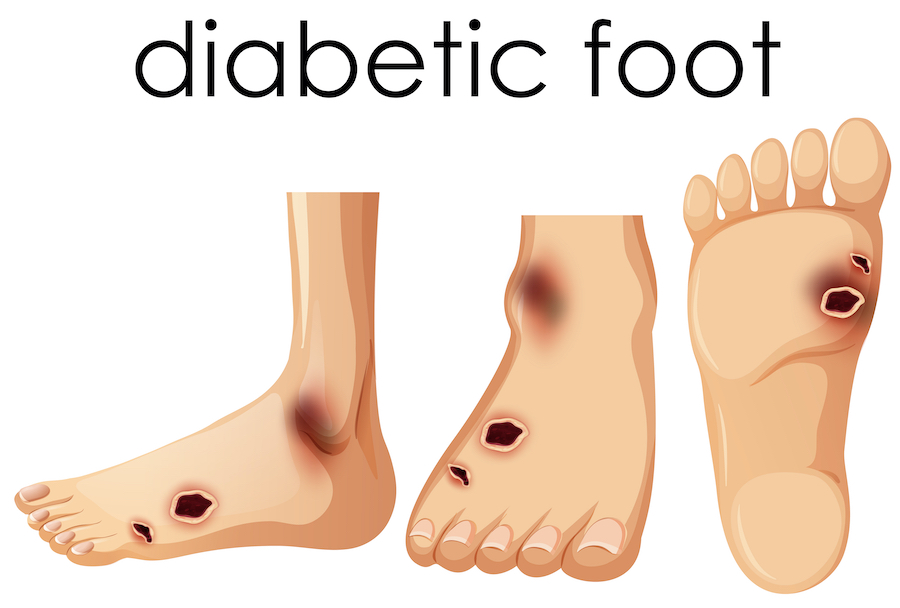Diabetes & Feet

According to the CDC, about half of all people with diabetes have some kind of diabetic neuropathy (nerve damage). You can have nerve damage in any part of your body, but nerves in your feet and legs are most often affected. Nerve damage can cause you to lose feeling in your feet.
Ulcerations, infections and gangrene are the most common foot and ankle problems that the patient with diabetes must face. As a result, thousands of diabetic patients require amputations each year. Foot infections are the most common reason for hospitalization of diabetic patients. Ulcerations of the feet may take months or even years to heal. It takes 20 times more energy to heal a wound than to maintain a health foot.
Diabetic Neuropathy
Peripheral Neuropathy is a nerve condition that affects the arms, hands, legs, and feet. The most common form of peripheral neuropathy is due to diabetes.![]()
Diabetic Skin Disease
There are a number of different skin diseases that result from diabetes such as malignant melanoma, actinic keratosis, Kaposi’s Sarcom, and more.![]()
Infections
Infections can be very common for those with diabetes. Foot infections in particular can be prevalent and need proper care.
![]()
Tips
There are some steps you can take to be proactive in maintaining good foot health as a diabetic.
![]()
Why See A Podiatrist?
According to the American Podiatric Medical Association (APMA), seeing a podiatrist when you have diabetes can prevent foot-related complications. Regular checkups and routine care are crucial to maintain foot health. At Podiatry of Greater Cleveland, we aim to provide the best care for our diabetic patients and welcome you as a new patient.

Charcot Joint Disease
It is estimated that 1 out of 700 patients with diabetes will develop Charcot joint. Other entities, which can lead to Charcot joint, include: chronic alcoholism, leprosy, hereditary insensitivity to pain, syringomyelia and multiple sclerosis.![]()
Diabetic Dermopathy
Another cause of generalized increased pigmentation is diabetes. The condition termed Diabetic Dermopathy occurs most frequently on the shins and lower legs.
![]()
Gangrene
Gangrene of the skin is associated with the loss of blood supply of a particular area. In some instances, it is caused by bacterial infection of an open sore or ulceration.
![]()

